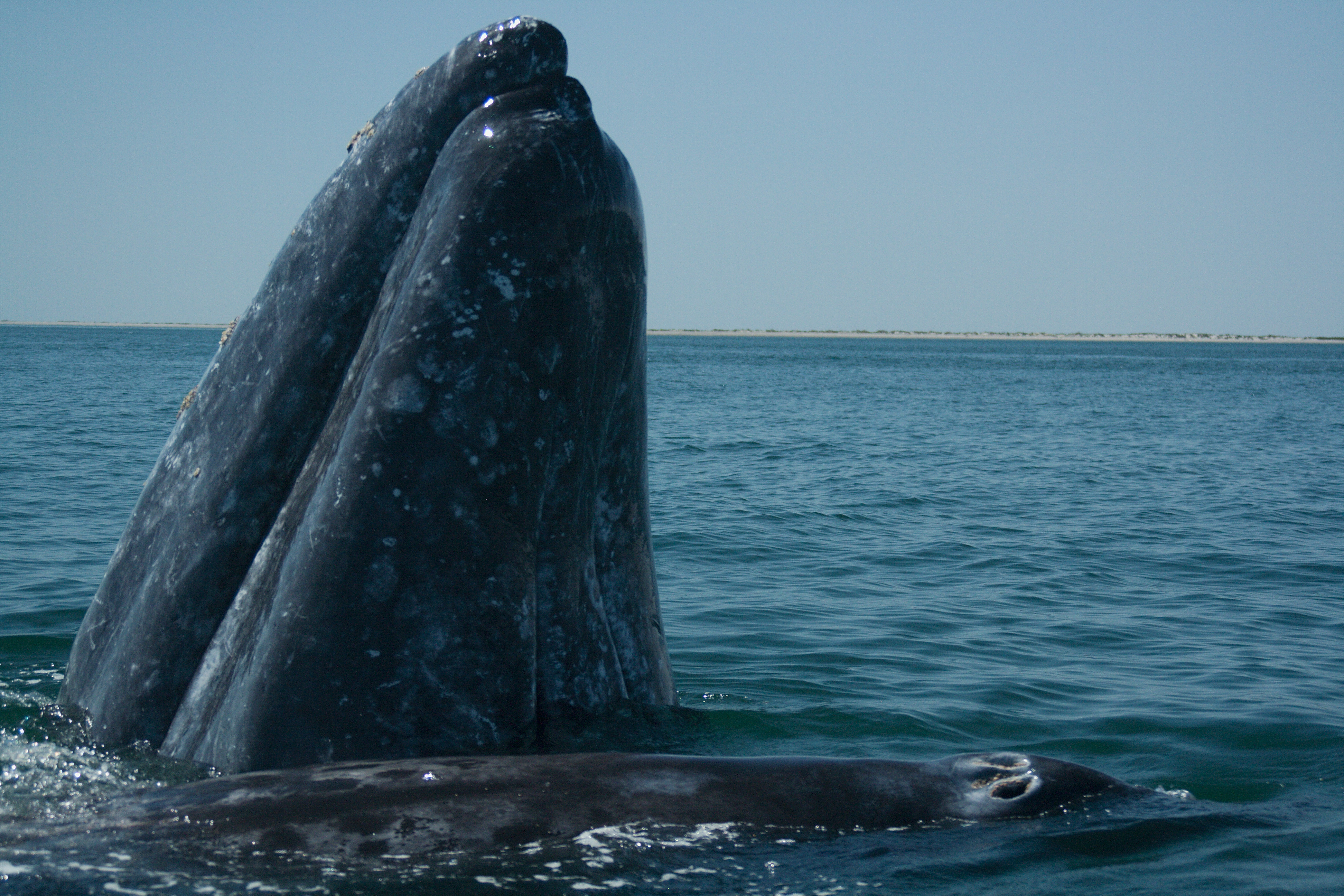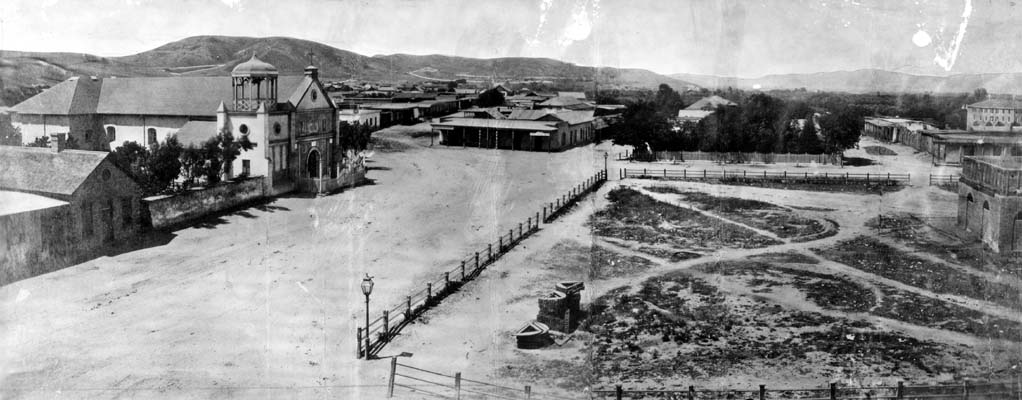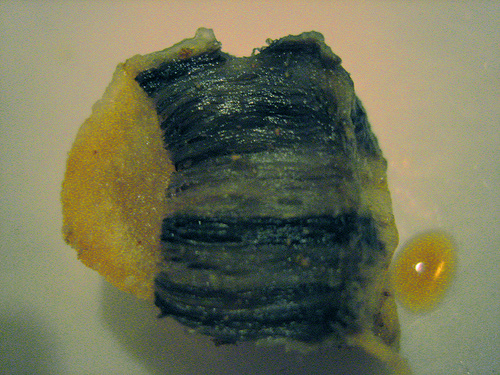|
Old Whaling Station
The Old Whaling Station or Old Whaling Station Portuguese Bend was a whaling station in California, built in 1869. The Old Whaling Station was designated a California Historic Landmark (No.381) on Jan. 3, 1944. The Old Whaling Station at Portuguese Bend was located in what is now Portuguese Bend in Rancho Palos Verdes, California in Los Angeles County. Portuguese Captain Frank Anderson processed 2,166 barrels of whale oil at this Historic Landmark from 1874 to 1877. In 1877 the station was abandoned. The whale stations had large kettles for rendering whale blubber into Whale oil, called tryworks. California's migrating whales were hunted in small boats from the station. Gray whales, as large as 36 tonnes, was the normal target. Hunting Gray whales in small boats was a very dangerous occupation, as many hunters were killed or injured. John Brown Whaling Company also operated at Portuguese Bend, starting in 1869. The last hunt was in 1885 due to the lack of the over hunted whal ... [...More Info...] [...Related Items...] OR: [Wikipedia] [Google] [Baidu] |
Portuguese Bend
The Portuguese Bend region is the largest area of natural vegetation remaining on the Palos Verdes Peninsula, in Los Angeles County, California. Though once slated for development including the projected route of Crenshaw Boulevard, the area is geologically unstable and is unsuitable for building. History of inhabitants Native Americans The peninsula was the homeland of the Tongva-Gabrieliño Native Americans. In other areas of the Los Angeles Basin archeological sites date back 8,000 years. Their first contact with Europeans was in 1542 with João Cabrilho (Juan Cabrillo), the explorer who also was the first to write of them. Chowigna and Suangna were two Tongva settlements of many in the peninsula area, which was also a departure point for their rancherias on the Channel Islands. Spanish and Mexican era In 1846 Jose Dolores Sepulveda and José Loreto received a Mexican land grant from Alta California Governor Pío Pico for a parcel from the huge original 1784 Spanis ... [...More Info...] [...Related Items...] OR: [Wikipedia] [Google] [Baidu] |
Gray Whale
The gray whale (''Eschrichtius robustus''), also known as the grey whale,Britannica Micro.: v. IV, p. 693. gray back whale, Pacific gray whale, Korean gray whale, or California gray whale, is a baleen whale that migrates between feeding and breeding grounds yearly. It reaches a length of , a weight of up to and lives between 55 and 70 years, although one female was estimated to be 75–80 years of age. The common name of the whale comes from the gray patches and white mottling on its dark skin. Gray whales were once called devil fish because of their fighting behavior when hunted. The gray whale is the sole living species in the genus ''Eschrichtius''. It was formerly thought to be the sole living genus in the family (biology), family Eschrichtiidae, but more recent evidence classifies members of that family in the family Rorqual, Balaenopteridae. This mammal is descended from filter-feeding whales that appeared during the Neogene. The gray whale is distributed in an eastern ... [...More Info...] [...Related Items...] OR: [Wikipedia] [Google] [Baidu] |
Palos Verdes Peninsula
The Palos Verdes Peninsula (''Palos Verdes'', Spanish for "Green Sticks") is a landform and a geographic sub-region of the Los Angeles metropolitan area, within southwestern Los Angeles County in the U.S. state of California. Located in the South Bay region, the peninsula contains a group of cities in the Palos Verdes Hills, including Palos Verdes Estates, Rancho Palos Verdes, Rolling Hills and Rolling Hills Estates, as well as the unincorporated community of Westfield/Academy Hill. The South Bay city of Torrance borders the peninsula on the north, the Pacific Ocean is on the west and south, and the Port of Los Angeles is east. As of the 2010 Census, the population of the Palos Verdes Peninsula is 65,008. The hill cities on the peninsula are known for dramatic ocean and city views, distinguished schools, extensive horse trails, and high value homes. History Native Americans The peninsula was the homeland of the Tongva-Gabrieliño Native Americans people for thousands of ... [...More Info...] [...Related Items...] OR: [Wikipedia] [Google] [Baidu] |
1869 Establishments In California
Events January–March * January 3 – Abdur Rahman Khan is defeated at Tinah Khan, and exiled from Afghanistan. * January 5 – Scotland's oldest professional football team, Kilmarnock F.C., is founded. * January 20 – Elizabeth Cady Stanton is the first woman to testify before the United States Congress. * January 21 – The P.E.O. Sisterhood, a philanthropic educational organization for women, is founded at Iowa Wesleyan College in Mount Pleasant, Iowa. * January 27 – The Republic of Ezo is proclaimed on the northern Japanese island of Ezo (which will be renamed Hokkaidō on September 20) by remaining adherents to the Tokugawa shogunate. * February 5 – Prospectors in Moliagul, Victoria, Australia, discover the largest alluvial gold nugget ever found, known as the "Welcome Stranger". * February 20 – Ranavalona II, the Merina Queen of Madagascar, is baptized. * February 25 – The Iron and Steel Institute is formed in L ... [...More Info...] [...Related Items...] OR: [Wikipedia] [Google] [Baidu] |
California Historical Landmarks
A California Historical Landmark (CHL) is a building, structure, site, or place in California that has been determined to have statewide historical landmark significance. Criteria Historical significance is determined by meeting at least one of these criteria: # The first, last, only, or most significant of its type in the state or within a large geographic region ( Northern, Central, or Southern California); # Associated with an individual or group having a profound influence on the history of California; or # An outstanding example of a period, style, architectural movement or construction; or is the best surviving work in a region of a pioneer architect, designer, or master builder. Other designations California Historical Landmarks numbered 770 and higher are automatically listed in the California Register of Historical Resources. A site, building, feature, or event that is of local (city or county) significance may be designated as a California Point of Historical Interest ... [...More Info...] [...Related Items...] OR: [Wikipedia] [Google] [Baidu] |
History Of Los Angeles
The history of Los Angeles began in 1781 when 44 settlers from central New Spain (modern Mexico) established a permanent settlement in what is now Downtown Los Angeles, as instructed by Spanish Governor of Las Californias, Felipe de Neve, and authorized by Viceroy Antonio María de Bucareli. After sovereignty changed from Mexico to the United States in 1848, great changes came from the completion of the Santa Fe railroad line from Chicago to Los Angeles in 1885. "Overlanders" flooded in, mostly white Protestants from the Lower Midwest and South. Los Angeles had a strong economic base in farming, oil, tourism, real estate and movies. It grew rapidly with many suburban areas inside and outside the city limits. Its motion picture industry made the city world-famous, and World War II brought new industry, especially high-tech aircraft construction. Politically the city was moderately conservative, with a weak labor union sector. Since the 1960s, growth has slowed—and traffic delays ... [...More Info...] [...Related Items...] OR: [Wikipedia] [Google] [Baidu] |
History Of Whaling
This article discusses the history of whaling from prehistoric times up to the commencement of the International Whaling Commission (IWC) moratorium on commercial whaling in 1986. Whaling has been an important subsistence and economic activity in multiple regions throughout human history. Commercial whaling dramatically reduced in importance during the 19th century due to the development of alternatives to whale oil for lighting, and the collapse in whale populations. Nevertheless, some nations continue to hunt whales even today. Early history Humans have engaged in whaling since prehistoric times. Early depictions of whaling at the Neolithic Bangudae site in Korea, unearthed by researchers from Kyungpook National University, may date back to 6000BCE. The University of Alaska Fairbanks has described evidence for whaling at least as early as circa 1000BCE. The oldest known method of catching cetaceans is dolphin drive hunting, in which a number of small boats are positioned ... [...More Info...] [...Related Items...] OR: [Wikipedia] [Google] [Baidu] |
California Historical Landmarks In Los Angeles County
List table of the properties and districts — listed on the California Historical Landmarks in Los Angeles County, Southern California. :*Note: ''Click the "Map of all coordinates" link to the right to view a Google map of all properties and districts with latitude and longitude coordinates in the table below.'' See also *List of California Historical Landmarks * National Register of Historic Places listings in Pasadena, California *National Register of Historic Places listings in Los Angeles County, California *National Register of Historic Places listings in Los Angeles, California This is a List of the National Register of Historic Places in the city of Los Angeles. (For those in the rest of Los Angeles County, go here.) Current listings :' ... References {{DEFAULTSORT:Californ ... [...More Info...] [...Related Items...] OR: [Wikipedia] [Google] [Baidu] |
International Whaling Commission
The International Whaling Commission (IWC) is a specialised regional fishery management organisation, established under the terms of the 1946 International Convention for the Regulation of Whaling (ICRW) to "provide for the proper conservation of whale stocks and thus make possible the orderly development of the whaling industry". As the decision-making body of the convention, the IWC reviews and revises measures laid down in the "Schedule to the Convention", which govern the conduct of whaling throughout the world. These measures include conferring complete protection of certain species; designate specific areas as whale sanctuaries; set limits on the numbers and size of whales which may be taken; prescribe open and closed seasons and areas for whaling; and prohibit the capture of suckling calves and female whales accompanied by calves. The Commission also mandates the compilation of catch reports and other statistical and biological records, and is actively involved in whale res ... [...More Info...] [...Related Items...] OR: [Wikipedia] [Google] [Baidu] |
Whale Blubber
Blubber is a thick layer of vascularized adipose tissue under the skin of all cetaceans, pinnipeds, penguins, and sirenians. Description Lipid-rich, collagen fiber-laced blubber comprises the hypodermis and covers the whole body, except for parts of the appendages. It is strongly attached to the musculature and skeleton by highly organized, fan-shaped networks of tendons and ligaments, can comprise up to 50% of the body mass of some marine mammals during some points in their lives, and can range from thick in dolphins and smaller whales, to more than thick in some bigger whales, such as right and bowhead whales. However, this is not indicative of larger whales' ability to retain heat better, as the thickness of a whale's blubber does not significantly affect heat loss. More indicative of a whale's ability to retain heat is the water and lipid concentration in blubber, as water reduces heat-retaining capacities, and lipid increases them. Function Blubber is the primary fat sto ... [...More Info...] [...Related Items...] OR: [Wikipedia] [Google] [Baidu] |
Kettle
A kettle, sometimes called a tea kettle or teakettle, is a type of pot specialized for boiling water, commonly with a ''lid'', ''spout'', and ''handle'', or a small electric kitchen appliance of similar shape that functions in a self-contained manner. Kettles can be heated either by placing on a stove, or by their own internal electric heating element in the appliance versions. As indicated by its name, the kettle was and is often used as teaware to brew tea or prepare a tisane. Some very modern versions do more than just boil water, and also make the tea and keep it warm. Etymology The word ''kettle'' originates from Old Norse ''ketill'' "cauldron". The Old English spelling was ''cetel'' with initial ''che-'' ʃlike 'cherry', Middle English (and dialectal) was ''chetel'', both come (together with German ''Kessel'' "cauldron") ultimately from Germanic ''*katilaz'', that was borrowed from Latin ''catillus'', diminutive form of ''catinus'' "deep vessel for serving or cooking ... [...More Info...] [...Related Items...] OR: [Wikipedia] [Google] [Baidu] |








